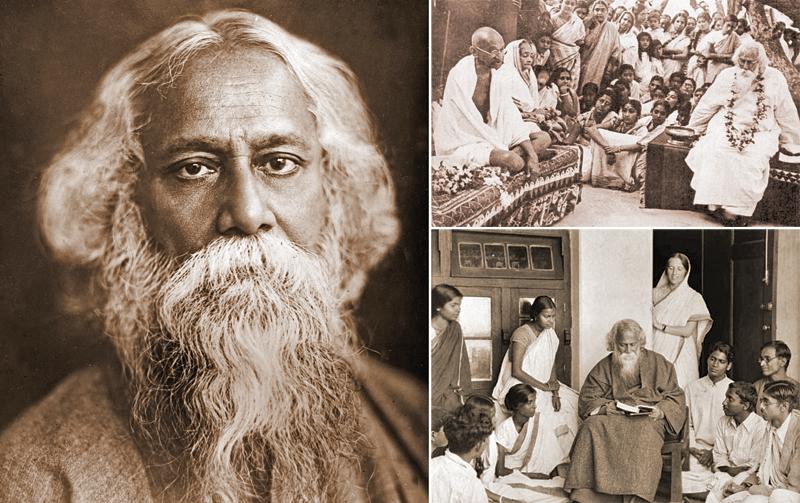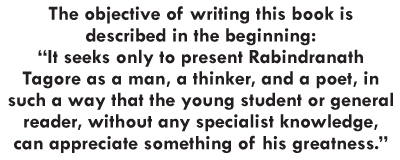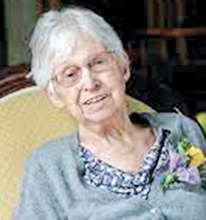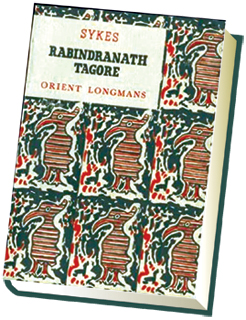
By Marjorie Sykes Published by Longmans
Rabindranath Tagore is a biography authored by Marjorie Sykes (1905-1995), a British educator and a member of the teaching staff of Visva – Bharati during 1939-42. Sykes went to India in the 1920s, joined the Indian independence movement, and became acquainted with Rabindrnath Tagore. After she joined the staff of Visva – Bharati in Santiniketan she was able to associate closely with Tagore. Hence, she is an ideal person to write a biography of Tagore. The objective of writing this book is described in the beginning:
“It seeks only to present Rabindranath Tagore as a man, a thinker, and a poet, in such a way that the young student or general reader, without any specialist knowledge, can appreciate something of his greatness.”
Absorbing style
 The book is written with a simple but absorbing style, producing mental images too, so the readers would get instantly attracted to the book. The first paragraph of the first chapter depicts Tagore’s home town environment. “The Chitpore Road runs from south to north through the district of Jorasanko, in the centre of crowded Calcutta. Trams run down it clanging their bells, buses hoot, and heavily laden carts and lorries are always passing to and fro. The street is narrow and lined with shops – cloth shops, hat shops, sweetmeat shops; and people push and shout from morning till night on the littered pavements, and in the roadway. At one corner there are musical instruments for sale, and men are sitting in their shops making drums. At this point a narrow lane turns off the main street. At the end of the lane, about a hundred yards from the main road, is a pair of great iron gates, and beyond are the verandahs of a large old three - storeyed house. This is the home of the Tagore family. On May 7, 1861, a baby boy was born in this house and was named Rabindranath Tagore.”
The book is written with a simple but absorbing style, producing mental images too, so the readers would get instantly attracted to the book. The first paragraph of the first chapter depicts Tagore’s home town environment. “The Chitpore Road runs from south to north through the district of Jorasanko, in the centre of crowded Calcutta. Trams run down it clanging their bells, buses hoot, and heavily laden carts and lorries are always passing to and fro. The street is narrow and lined with shops – cloth shops, hat shops, sweetmeat shops; and people push and shout from morning till night on the littered pavements, and in the roadway. At one corner there are musical instruments for sale, and men are sitting in their shops making drums. At this point a narrow lane turns off the main street. At the end of the lane, about a hundred yards from the main road, is a pair of great iron gates, and beyond are the verandahs of a large old three - storeyed house. This is the home of the Tagore family. On May 7, 1861, a baby boy was born in this house and was named Rabindranath Tagore.”
Facts about Tagore
Sykes always tries to give facts about the life of Tagore. From the first chapter, readers could know about Rabindranath’s grandfather, his parents, his brothers and his upbringing among the large family:
“Rabindranath’s father was Devendranath Tagore, a great and saintly man; people called him ‘Maharsi’ (great saint) because of his goodness and devotion. Devendranath’s father, Dwarkanath Tagore, had been known as ‘Prince’ Dwarkanath on account of his wealth and the magnificent style in which he lived. When Rabindranath was born the family had lost a good deal of this wealth; but they were still very rich, and gave the children the best education. The family was a very large one. Rabindranath was the Maharsi’s fourteenth child and youngest son. Some of his elder brothers and sisters were already grown up and married while he was still a child. His two chief playmates were both a little older than he was. One was his next elder brother Somendra, and the other was his sister’s son Satya. These three boys used to play and go to school together.” (Pages 1 - 2)
Though the Tagore family was rich, the children were brought up very simple and without unnecessary toys or possessions. The reason was Maharsi Devendranath did not like luxury, especially for children.
 Rabindranath was taught at home; tutors came to his house. But the education was so tight that every day except Sunday was filled with study from morning till night. As Sykes mentions, “School was another prison, much more dreary than home, and he named it his ‘Andamans’, when he looked back on those days.” This was one of the reasons why Rabindranath founded his ideal school Shantiniketan in 1901, which has a flexible curriculum suitable for students with different aptitudes and needs.
Rabindranath was taught at home; tutors came to his house. But the education was so tight that every day except Sunday was filled with study from morning till night. As Sykes mentions, “School was another prison, much more dreary than home, and he named it his ‘Andamans’, when he looked back on those days.” This was one of the reasons why Rabindranath founded his ideal school Shantiniketan in 1901, which has a flexible curriculum suitable for students with different aptitudes and needs.
Medium of education
Rabindranath always thought that one’s education has to be received in one’s own native language. He also received his education in Bengali, his own language because of Hemendranath Tagore, his third brother who took charge of the children’s education when his father was away from home.
Hemendranath only approved Bengali as the education media for the Tagore children as against the common practice in Bengal for everything to be taught in English. Rabindranath felt very grateful for his elder brother’s wise decision:
“Learning, he said, is like eating; if the first mouthful is pleasant to the taste, the boy continues to eat with a good appetite; but if the first mouthfuls are wrapped in the indigestible cover of a foreign language, the boy’s appetite is spoiled.” (Page 12)
He spoke out saying that not only in Bengal schools, but also all the schools and universities in India should give their education in its native languages. Once he was invited for a Convocation Address of the University of Calcutta. But the address was given in Bengali by him on that occasion which was a revolutionary event in the University.
Golden Garland
The book is full of stories and anecdotes too. For example, once Rabindranath participated at the wedding of his friend. It was not long ago that his book Evening Songs, a volume of poems was published. The chief guest at the wedding was great novelist Bankim Chandra Chaterji, and when he was received by the host with a garland, Rabindranath also reached that place. At that moment, Bakim Chandra took the garland from his own shoulders and garlanded Rabindranath instead, saying to his host: “It is he who deserves a garland, my friend! Have you not read his Evening Songs?” This incident was vividly described in the book.
Common people’s language

Rabindranath was the first to advocate the common people’s language in India. He saw that the language of actual speech was living and powerful, the unnatural language of books often dead.
He believed that writers and speakers should write or speak in a way that the people would understand.
To attest to this, he himself wrote a book titled Sonar Bangla, a collection of songs which could be understood by simple village folk as well as educated people. The path taken by him had great obstacles caused by pundits. Sykes describes the pioneering task of Rabindranath:
“He wrote prose which is full of life and vigour, using the homely, witty, natural expressions of daily talk. Some of his greatest poetry has a strength and energy which is due in large part to his use of the short, crisp words of the spoken language….. The modern writers of Bengal have followed Rabindranath in using this simple, common language.
Modern Bengali poetry is not dull and difficult for children, or full of strange words which they do not understand.
There are many books of children’s songs and poems which even small children can easily enjoy. The change is tremendous, and it is the work of Rabindranath more than of any other single man.” (Page 45)
Global Man
Rabindranath was a global man, he detested nationalism. During his visit to Japan he gave a series of lectures at the University of Tokyo and his subject was Nationalism. In these lectures he pointed out three dangers and evils of national pride, criticising the life of the modern nation-states. Sykes describes this in her book as, “The first of these evils is ‘government by machinery’. The poor man is made to feel that there is no ruler who really cares for him, but that the government is like a great engine which goes forward on its fixed path, whether he is ruined or not. The second great evil is the narrow, selfish desire for wealth and power for their own country which makes men blind to the rights of other people. He openly condemned Japan’s actions in China, and said that no country could be really great or happy if it did not consider the laws of right and wrong more important than its own success or wealth. A few years later he said the same thing to his own people in India. ‘My countrymen have no patience with me,’ he wrote, ‘for I believe God to be higher than my country.’ The third great evil of nationalism is that the modern nation allows great social injustice and does not make any real effort to improve the life of the common people.” (Pages 81)
In this way, Marjorie Sykes biography collects very important facts about Rabindranath Tagore and gives readers much insight into his life.
